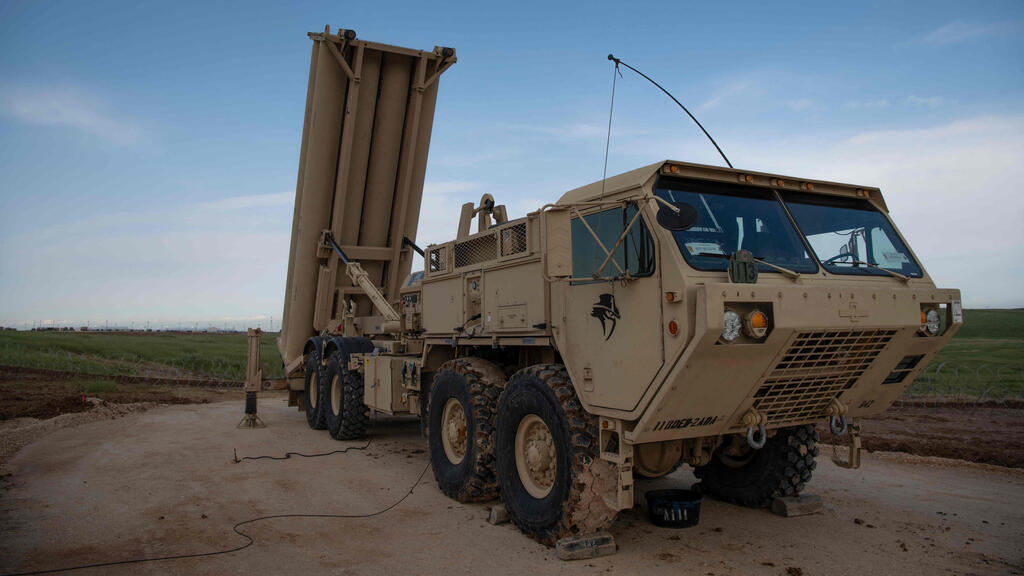Getting your Trinity Audio player ready...
Israel announced on Saturday that the U.S. had agreed to deploy a THAAD air defense system to help intercept ballistic missiles, with the U.S. confirming on Sunday that the system would arrive soon. This comes amid a potential Israeli retaliation to Iran's ballistic missile attack and the possibility of a significant and rapid escalation in regional tensions in the Middle East.
Iranian Foreign Minister Abbas Araghchi issued a veiled threat against U.S. forces operating in Israel, in a post addressing the THAAD system’s deployment. "The United States is putting the lives of its people at risk by deploying an American missile system in Israel. While we’ve made enormous efforts to reduce the likelihood of a full-scale war in the region in recent days, I must say, we have no red lines when it comes to defending our people and assets."
THAAD air defense system
(Video: Reuters)
The Wall Street Journal reported on Sunday that around 100 U.S. troops will be responsible for operating the system, a detail later confirmed by the Pentagon. The system will represent a significant air defense capability that could serve as a "force multiplier" for Israel against the various threats surrounding the country, particularly against Iran.
The THAAD (Terminal High Altitude Area Defense) system is a mobile, high-altitude regional defense system, similar in capability to Israel's Arrow system. It can intercept missiles outside the atmosphere, using kinetic energy to neutralize them. THAAD is designed to target various stages of an enemy missile's flight path, as well as other threats.
The system’s deployment comes following an Israeli request to the U.S. It’s also seen as a show of strength by sending additional military assets to the region. A Tehran-based source cited by CNN said Iran has informed the U.S. that it will retaliate against any new attack by Israel.
2 View gallery


THAAD battery in Israel in 2019
(Photo: AFP PHOTO / HANDOUT / DVIDS / US ARMY / Staff Sergeant Cory D. Payne)
What makes this system special?
"The system is comparable to the Israeli Arrow system; it’s not intended to add another layer of defense or replace an existing system. It’s about providing additional firepower and each of these batteries comes with dozens of interceptors, significantly boosting firepower,” former IDF Air Defense commander Brig.-Gen. (res.) Zvika Haimovich told Ynet.
“We saw around 200 interceptors used in the last barrage after 100 were used in April. If the next attack includes more munitions, this addition provides more opportunities and enhances your ability to defend against Iran’s more intense scenarios,” he explained.
What’s the significance of deploying THAAD beyond just boosting firepower?
"In essence, it's part of a defensive alliance and U.S.-Israeli partnership. This system is one of several components we’ve seen over the past year including elements on the ground, at sea and detection systems in space.”
“It sends a regional message of a strong, stable strategic alliance, with the U.S. literally standing by Israel's defense. It’s both a deterrent and a practical threat that could eventually manifest in the interception of missiles fired at Israel from the ground by American forces. This dual significance is incredibly important," Haimovich said.
2 View gallery


THAAD battery in Israel in 2019
(Photo: AFP PHOTO / HANDOUT / DVIDS / US ARMY / Staff Sergeant Cory D. Payne)
What has U.S.-Israel cooperation in this field looked like so far?
"During the first Gulf War, the Americans deployed air defense forces in the region but there’s been an ongoing process with the U.S. since the early 2000s where hundreds and thousands of American troops come to Israel every two years and we practice the response to a complex, multi-front threat landscape that didn’t only emerge this past year.
"These are personal connections, reciprocated on a daily and weekly basis and not just in biannual exercises. This doesn’t just start with an order from the U.S. president – it’s built on a longstanding, very personal relationship, as close as it can get. When people say 'fighting shoulder to shoulder' – it's not a cliché; that’s exactly what it is," Haimovich added.
Get the Ynetnews app on your smartphone:





